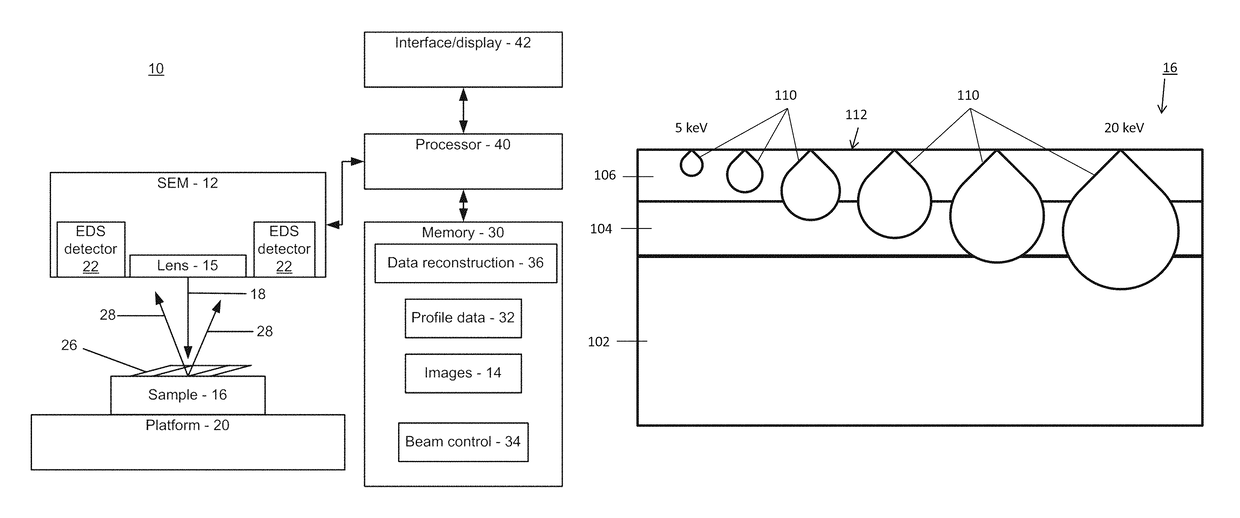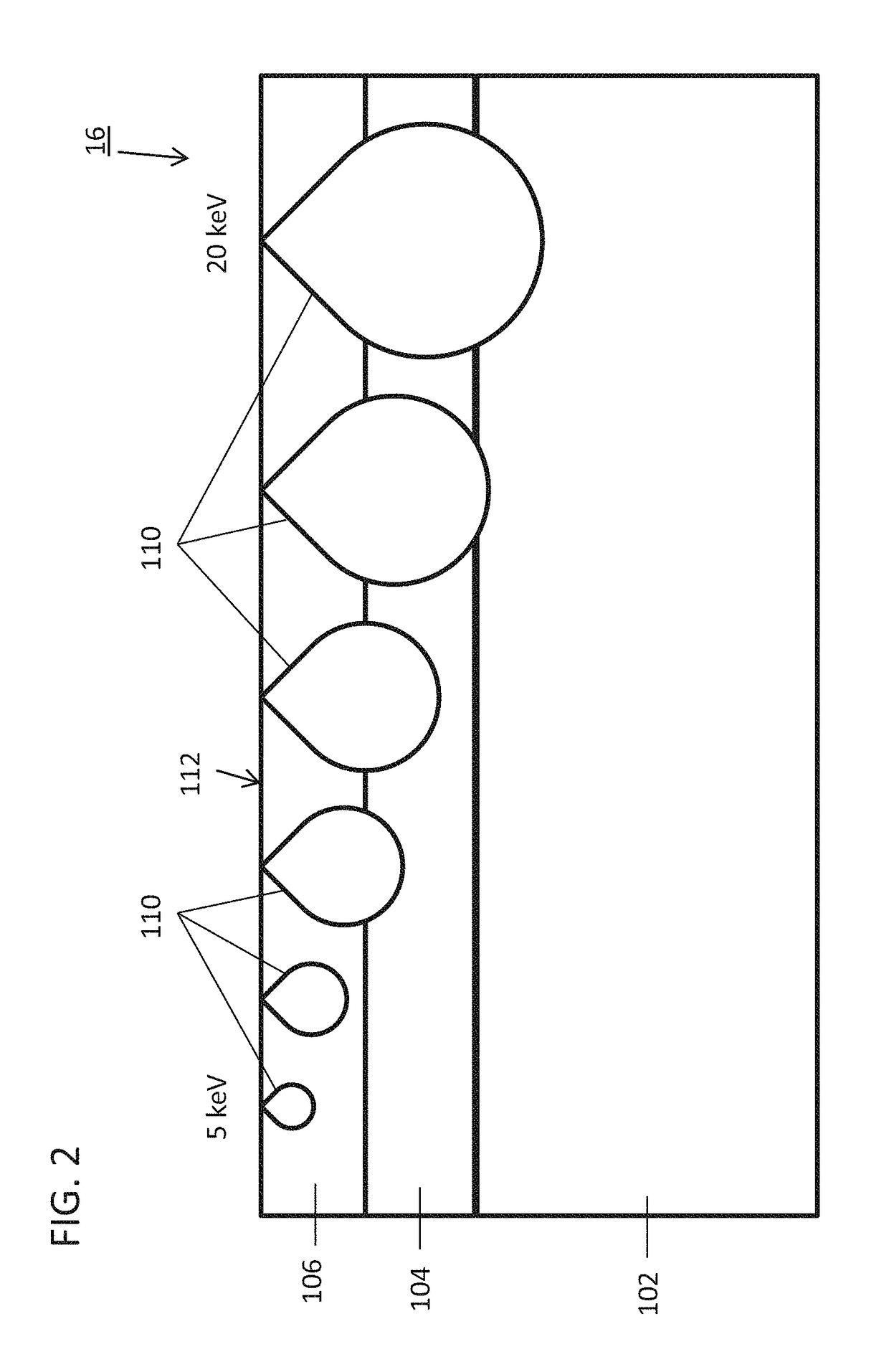Cross sectional depth composition generation utilizing scanning electron microscopy
a scanning electron microscope and composition technology, applied in the direction of material analysis using wave/particle radiation, material analysis by measuring secondary emission, instruments, etc., can solve the problems of too small deconstructibility or too fragile cross-sections
- Summary
- Abstract
- Description
- Claims
- Application Information
AI Technical Summary
Benefits of technology
Problems solved by technology
Method used
Image
Examples
Embodiment Construction
[0017]In accordance with the present principles, a scanning electron microscope (SEM) is employed to analyze materials to generate a cross-sectional depth composition into a surface of a sample. This is especially useful for small samples that are extremely difficult to manually cross-section and for specimens where non-destructive testing is needed. In one embodiment, a SEM creates a cross-sectional view into the sample by varying a beam voltage of the SEM. A cross-sectional depth composition of a surface is determined by performing a plurality of point scans using a SEM at various beam energy levels and then comparing electron dispersive X-ray spectroscopy (EDS) results at those various energy levels to create a depth composition.
[0018]In one illustrative method, beam penetration (which has a tear drop shape) is measured at various beam energy levels. As the beam energy is progressively increased or decreased, the composition that is measured by EDS detectors changes. These change...
PUM
| Property | Measurement | Unit |
|---|---|---|
| energy | aaaaa | aaaaa |
| energy level | aaaaa | aaaaa |
| energy level | aaaaa | aaaaa |
Abstract
Description
Claims
Application Information
 Login to View More
Login to View More - R&D
- Intellectual Property
- Life Sciences
- Materials
- Tech Scout
- Unparalleled Data Quality
- Higher Quality Content
- 60% Fewer Hallucinations
Browse by: Latest US Patents, China's latest patents, Technical Efficacy Thesaurus, Application Domain, Technology Topic, Popular Technical Reports.
© 2025 PatSnap. All rights reserved.Legal|Privacy policy|Modern Slavery Act Transparency Statement|Sitemap|About US| Contact US: help@patsnap.com



